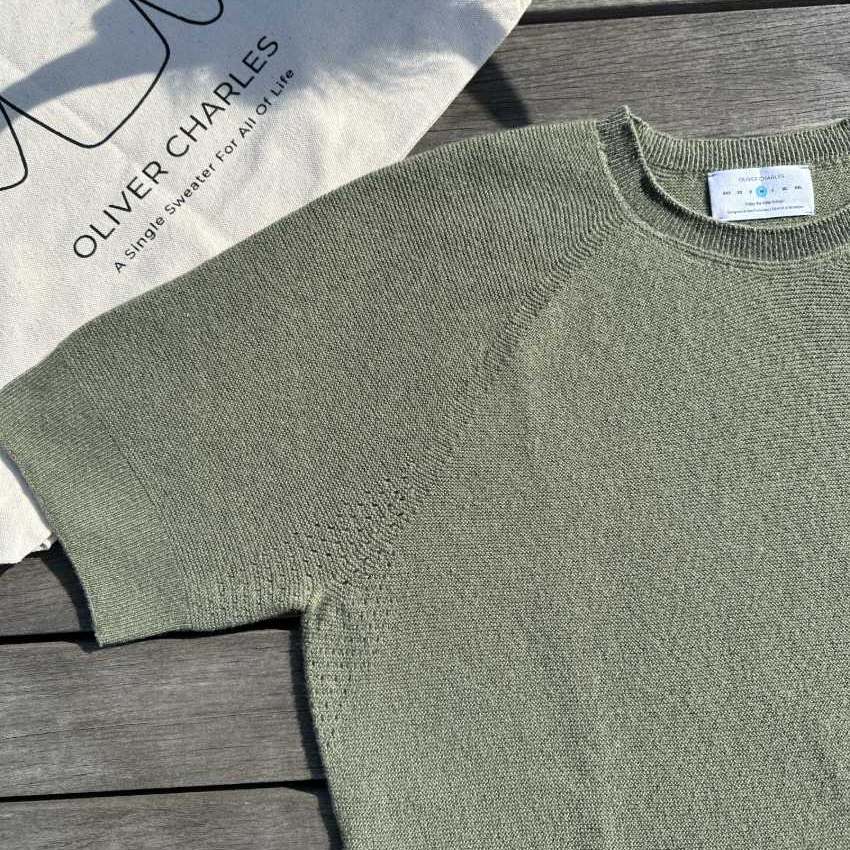6 Tips For Living Sustainably And Traveling In Relationship
How to minimize your impact on the environment and give back while traveling.
January 20, 2022
By Lia Klinchik
On The Path Of Eco-Conscious Adventure
Introducing a five-part blog series about how you can get the most out of life on the road, traveling lightly, while also benefitting the environment and people around you.
- OC Official Road Tripping Guide
- My 1-Week Challenge Experience
- Relationship On The Road
- My OC Sweater in Idyllwild, CA
- Living Simply to Benefit The Planet
----------
Each time I travel, there’s a hunger that grows stronger in my belly, a yearning that feels similar to homesickness.
I can’t wait to get back outside, but my enjoyment of the world around me does not come without a fear that one day it might not be here, or at least not the same way it is now.
Spending time on the road has inspired some questions in my mind; What do sustainability and reciprocity mean in terms of adventuring?
How can we be sustainable socially, economically, and environmentally?
How can I spread the love I feel for the planet, instead of just letting it idle inside?
Along the way, I’ve discovered some gems that I always carry with me in my pack.
These are ways I work to create a balanced relationship with the places I go.
Let me show you what I’ve learned including; ways you can save money, shop smart, and play a part in creating a sustainable present and better future.

Sustainability Starts With Reciprocity
We hear the words sustainability and reciprocity thrown around a lot, but what do they actually mean? And how do these words relate to adventure?
In her book, Braiding Sweetgrass, Robin Wall Kimmerer has an impactful quote that goes like this:
“Knowing that you love the earth changes you, activates you to defend and protect and celebrate...
But when you feel that the earth loves you in return, that feeling transforms the relationship from a one-way street into a sacred bond.”
The places I visit bring me so much joy. They are my teachers. Exposure to new landscapes has been a driving factor in my change in perspective on life and ways of learning.
And experiencing walks of life much different than my own has helped me have gratitude. The time we have here on earth is short and valuable.
I’m lucky to have been allowed the time out in nature. I feel that nature giving me her time is an act of love. I’m sure you too have felt a similar feeling while traveling - whether that be in the embrace of the wild, the freedom of the wind flowing through your hair, or walking along the streets of a completely unfamiliar city.
This is a transformative feeling. Feeling gratitude and love for someone or something comes with great responsibility.
You may have the idea that since you won’t be here in ‘x’ amount of years that it doesn’t matter how you exist on earth.
Or that you’re only one person so how could you possibly make a change great enough to save the planet?
Or maybe you think there isn’t a plausible solution to the problems we face as a collective.
Conversely, I think;
- What you, individually, do now will affect the planet and its people many years from now. Just because you don’t see the immediate result or consequence of your action does not imply that there is none at all.
- Maybe one person can’t make a change great enough to save the planet alone, but they can influence everyone around them. The ripple effect is great enough to captivate an entire collective to save the planet.
- Even if there isn’t and we’re all doomed to perish, at least we can say we tried.

6 Tips to Make Your Travels Sustainable
So what does sustainability mean? Sustainability means maintaining conditions where humans and nature exist in harmony to support present and future generations.
And when we talk about reciprocity, we mean the act of exchanging things for mutual benefit - giving, as well as taking.
Creating a better future means more than leaving just enough for future generations. That would merely be surviving.
What we look to achieve is for both parties, humans and nature, to thrive.
As part of my responsibility and connection to all the earth provides for me, I look for opportunities to put more energy into the cycle, instead of draining it.
Below are 6 things I do to practice sustainability and reciprocity while on adventures. Continue reading to see how I practice each.
- Conscious Buying
- Repeat Outfits
- Food And Food Storage
- Walk When Ya Can
- Take the Scenic Route
- Leave No Trace
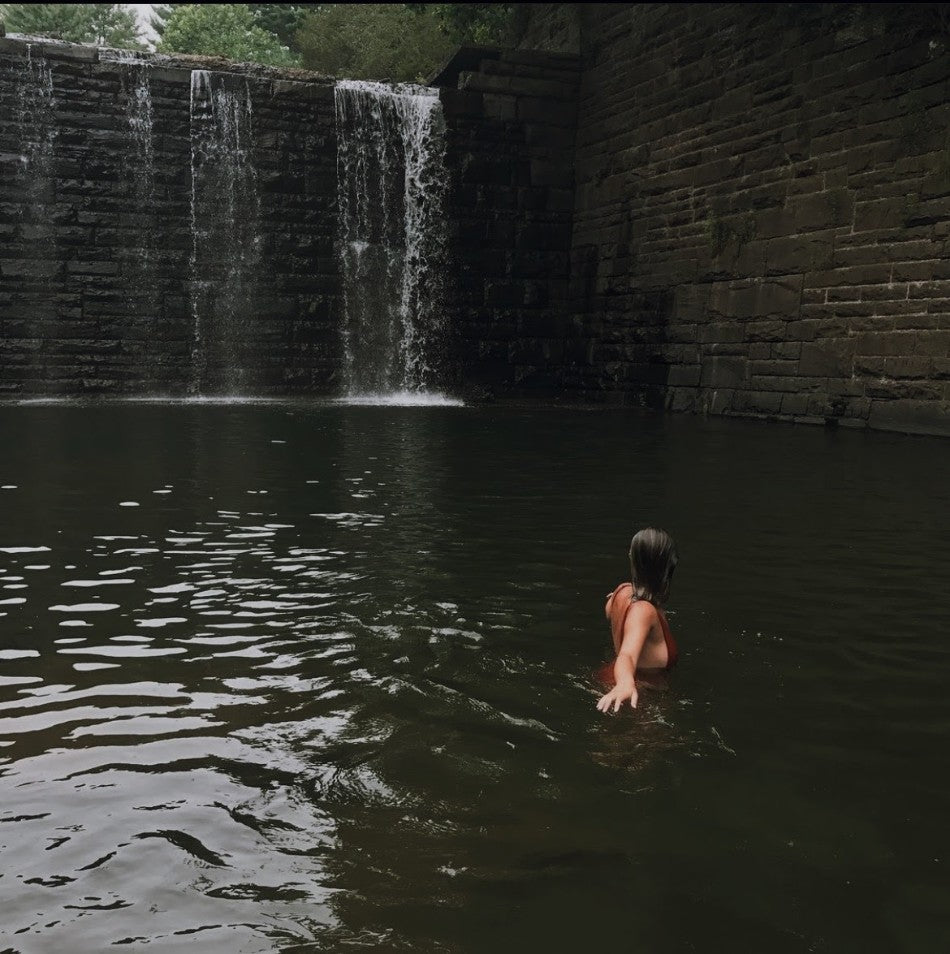
Conscious Buying
Conscious buying is involved in two aspects of traveling; what you buy to bring on the road and what you buy while you’re out on the road.
First, before you even set off on your travels, it all starts at home. You want to purchase items that are ethically sourced, durable, and are made of high quality materials.
By doing this, you are purchasing less of what needs to be replaced frequently, thus creating less waste. You also reduce your reliance on fast fashion.
Purchasing clothing items that you'll wear over and over minimizes your environmental impact and also helps you pack smarter.
When it comes to skincare or body products, you also want to keep an eye out for products that are eco-conscious, meaning they don’t exude microplastics or chemicals into the environment.
The ingredients within the products should be sourced responsibly as well.
A general rule of thumb is: The simpler the better. Shop for things with the least amount of ingredients and ingredients you can read. Oliver Charles just has two, yak and merino wool.
Keep in mind that the more you buy, the more you are going to have to pack. This brings me to my second point - when you’re on the road, buying souvenirs, really think about what you need.
You might think you want random items now, but ask yourself these questions before purchasing:
- Will I want this in a few months?
- Where am I purchasing this from?
- Is it from a chain of stores or local?
- What is the quality of these items?
- Will this fit in my pack?
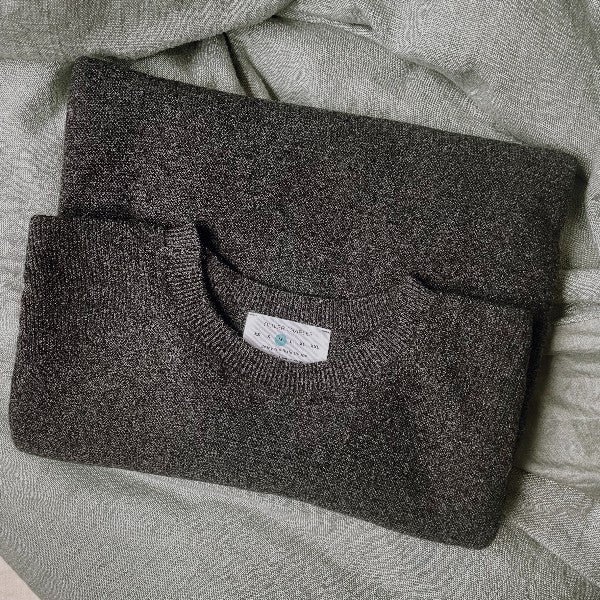
Essential Clothes For Everyday Wear
After investing in good quality pieces that you love and assign as staples in your wardrobe, start repeating!
You don’t have to wear the same exact outfit every day, but clothing staples are items you can wear over and over. Learn to switch around and get crafty with what you already have.
This is one of the most convenient parts of creating a sustainable travel lifestyle.
Because Oliver Charles wool sweaters are made of khullu, AKA yak wool, they can easily be worn for weeks without care or worry.
Yak wool is an ultra sustainable material that is ethically sourced, ecologically sustainable, and helps sweaters last a lifetime.
This sweater is a travel essential and checks off everything a sustainable piece of clothing should.
Paired with other neutral, high-quality items you can mix and match, your pack size will be reduced. You can also avoid paying for a checked bag this way.

Shoping And Storing Food On The Road
- Meal Plan: Planning your meals before going on any kind of trip will save you loads of money.
Either do your research on where to eat, meal prep, or do a mix of both! You can purchase a cooler and put cold snacks/food in there while you’re on the road. - Carry Reusable Containers: Cut out the use of single-use plastics. Instead of using ziplock bags, I use silicone bags and containers to put snacks and meals in.
You can use glass or metal containers as well, but they’re a little heavier and aren’t collapsable. You can also reduce waste by carrying your own reusable cups and water bottles. - Invest In a Reusable Water Bottle: There’s really no need to be drinking out of plastic water bottles. Single-use plastic not only creates a ridiculous amount of non-recyclable waste but also doesn’t even keep your drinks warm/cold!
Plastic water bottles kept in hot cars also present the possibility of harmful chemicals leaching into water that you will later consume.
I take my insulated, metal water bottle everywhere I go, from the coffee shop to the trail. It keeps drinks at a consistent temperature and prevents waste.
Purchasing a metal utensil set is a good idea as well for easy-to-clean eating on the road.
If you stop at coffee shops a lot and love a strong, iced latte like I do, this is especially helpful in the case of straws!
You can find metal straws pretty cheap in grocery stores, online, in outdoor stores, and local sustainable shops.

Walk When Ya Can
Or take public transport. Part of exploring is getting out on the trail to wander in the woods.
Getting out to walk or choosing the bus over your car puts you in a position to meet more people and fully immerse yourself in a new place. I find train rides particularly fun.
Since I’m not the one driving, I have more time to admire the landscape and relax.
And while doing so, I help reduce the amount of emissions from single-occupancy vehicles that contribute to air pollution.

Why I Always Take the Scenic Route
I am an advocate for taking the scenic route. You get to pull off at random moments and see things you wouldn’t have otherwise when taking the freeway.
Take your time and drive slow. It’ll save you gas. After all, it’s about the journey, not the destination.
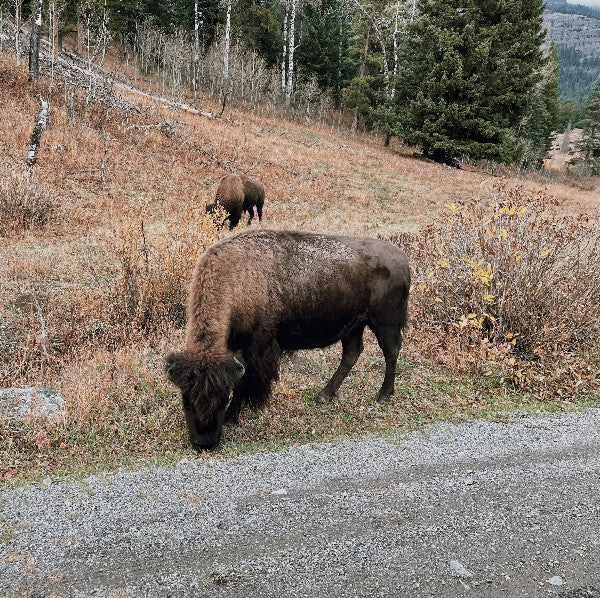
Leave No Trace And Why It's Important
There are 7 principles to Leave No Trace, which serve as a guide to help bring awareness to exploring the outdoors sustainably.
These principles are valuable to remember not only when you’re visiting parklands, but regardless of where you are. Be respectful of the land you’re on at all times.
Some important things to remember when traveling are:
- Don’t leave behind any garbage whatsoever, including TP! And since we’re in COVID times, please do not leave your masks behind.
Check to see if anything has fallen behind you. I’ve seen those blue disposable masks laying out in the Badlands. - Don’t overwhelm the land. From Yosemite to the White Mountains of New Hampshire, popular parks are riddled with traffic during busy months.
All this occupation puts stress on the land and inconveniences the locals. If you can, plan to go to an alternative place and come back when the park is not so busy. - For the love of whatever you believe in, do not pluck plants or step on them this is especially true in delicate environments.
Not even for a second while you get your Instagram photo! And make sure to keep your pets off them too. - Be mindful about what you take. Or perhaps don’t take anything at all. Whether it be quartz crystals on the mountains, shells on the beach, or flowers from a meadow, understand that they do not belong to you. Ask before you take. And if you do, practice gratitude and say thanks.
- Help prevent our waters from being polluted. Keep harmful chemicals and human waste out of rivers and streams. Do your business away from the river and bury it correctly.
And know that what you put on your skin before you go into oceans and rivers ends up there as well! Be conscious about what you put on your body.
The Environmental Working Group (EWG) has an app called Healthy Living that allows you to scan your products, see their safety rating, and have the ingredients explained to you. It also lets you know if any ingredients are known to be toxic to marine life!

How To Take a Road Trip In Relationship
Road tripping in relationship is about being in balance. We have a lot to learn from indigenous ways of life across the world, as we do not see life without being in relationship with the natural world.
It is simply their way of life to be in harmony with nature. There is a core understanding that nature provides us with all that we need to survive, and we hold a responsibility to the planet.
It’s a grave misfortune that most of us have been brought up in a society that is constantly and selfishly taking from the earth, no matter the cost.
And this is based on the idea that land, resources, etc., belong solely to us - not other beings too. But what if we began to shift that paradigm back to our roots? What if we could possibly serve the earth as the earth serves us?

Acknowledgment
As we stood in the autumn woods behind my teacher’s home in the Southern Catskills of New York, he told us that when he goes hiking, he completely quiets his mind.
He makes the space to listen- to feel, notice, and see. And frankly, if you cannot be fully present, how do you merit the gift of being there?
I believe this acknowledges that when we go out into the woods, we are given fresh air to clear our lungs with and peace in our hearts.
It is a homecoming, and we have a great deal to learn from the forest, so long as we can be quiet for a second and learn to listen.
Opening your eyes to the aliveness of what’s around you brings you to a whole other perspective. You see the soul in that of which you may have thought was once non-living.
Begin practicing acknowledgment and gratitude. Do this everywhere you go. Acknowledgment is part and parcel of gratitude.
Realize that non-human beings are living as well, can see and speak and hear, though it’s different from the way we do.
Start in your backyard. Observe the variety of plants sprawled out on the lawn or sidewalk.
Walk among the same places you always do, except this time, say hello. Notice the slight turn of leaves turning in the soft breeze. Or the scurrying of birds in alpine silence.
Acquaint yourself with the trees, mountains, and waters you travel to. Soon they will be familiar faces.
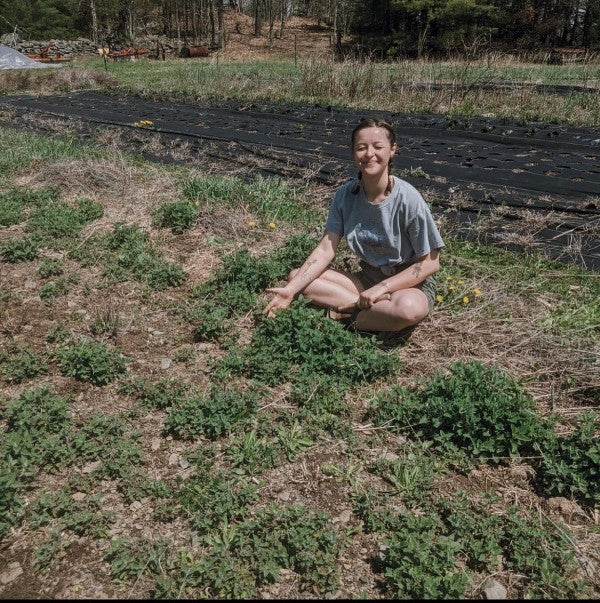
Volunteering
A more involved way of being a land steward is to get involved in some sort of volunteer work.
Perhaps you could even use volunteering as an excuse to travel and choose something that piques your interest.
Places like WWOOF (World Wide Opportunities on Organic Farms) and WorkAway give people the opportunity for cultural exchange, working with the land, and seeing new parts of the world.
I used to volunteer at an herb farm in Upstate New York. Aside from getting to explore the Catskills, being there unexpectedly filled me with purpose.
Tending to gardens brought me closer to the earth, showing me the direct connection between the cycles of life, the plants, and I as the human caretaker.
It is a subtle, yet extraordinary, experience to plant a seed, care for it, and watch it grow. And once again getting to watch life change and end as the plants go into dormancy.
If you’re unable to volunteer, no problem! You can offset your trip by donating to local parks and projects that foster social and ecological diversity, ecological restoration, and improvement of the community.

Know Your Products
Buy from places that give back to the community in some way and have a positive impact on the environment.
We see overharvesting and brashness in the face of nature all too often. Do your research into what you consume, in terms of food and what you put on your body, especially on things you use/wear every day.
Look for items that work with local farmers and pay fairly. Ask what these companies’ values are and see if it matches up with their actions. If these businesses are outsourcing resources, how are they benefiting the community in return?
Oliver Charles is a great example of a mutually beneficial relationship between product and source of materials.
Yak wool is a source of income and livelihood for nomadic herders who live amongst the animals. It all comes full circle.
Vote with your dollar. Invest in the future of the community. You get a taste of the people of the area, get to know who makes/grows the items you purchase, and stimulate the local economy.
For example, instead of going to Starbucks, go to a local coffee shop instead. Buy from a farmer’s market instead of a grocery store chain.
Shopping local fosters diversity, creativity, and helps local businesses stay in business, which can be difficult with larger competitors
Also because there is much less transportation of the products, you reduce your carbon footprint.

What's The History Of Your Destination?
Regarding the United States, in particular, exploring the history of where you’re going is a useful way to wake you up to what was here before you - and what is most likely still around.
Part of traveling is holding respect for other cultures. Recognize you are a guest on the land.
Some questions you can ask yourself when you go somewhere new are:
- Whose land is this/who inhabits it?
- Are native people still living here?
- What can I learn from these people?
- Where do locals tell people to avoid?
- How can I contribute/support them?
- Are there cultural centers I can visit?
- What are the landmark names?
- What's the significance of the land formations to indigenous peoples?
You may also want to consider how you can support indigenous movements. Many are fighting to grant personhood to the land, which is an important piece of protecting the earth (personhood = rights!).
In season five, episode seven, of Anthony Bourdain’s Parts Unknown, he visits Molokai in Hawaii and talks to some of its native people.
There was a conversation that really stuck with me. Bourdain asks a caretaker of the Kawainui fish pond, “So who gets to be Hawaiian?”
In response, he says, “You see this, what we’re standing on? Our Āina (translates to land) - it matters so much, that if you love this place, and you don’t want to develop it, destroy it, abuse it- we’re on the same team.”
What this all boils down to is the love of the land and the shared desire to protect it, how we can support each other in common defense.

Follow These Tips to Live Life Sustainably
Have the mindset that no one else is going to do it. I encourage you to take the initiative to heal your relationship with the outdoors, have important conversations, and be a teacher.
You can find out what communities need and are asking for by talking to locals.
If you seek, you shall find. And being a teacher means passing this information on to friends, family, and other strangers along the way.
Be a teacher when it comes to reciprocity. Spread the word. Communication is the best way to spark change.
In an article for the International Journal of the Commons, mutual affairs between people and their land and how this can help restore community access to land is explored.
We can see that establishing a reciprocal relationship with the places we live and go not only benefits our individual and planetary health...
But there are social and economical benefits to changing the way we act as a community as well.
This, in turn, has an impact on the way places are governed and if communities are granted rights.
Practicing sustainability and reciprocity is not a difficult feat. In fact, the more you do it, the more it just becomes part of your way of life.
Buying from places that benefit the environment and the communities they operate in, leaving no trace, and spreading the word are just some of the ways we can work towards a healthier planet.
We need not only to keep sustainability in mind but also to learn to be in a mutual relationship with the world around us.
The word tourist very honestly has a negative connotation, but we can change that. Practicing reciprocity brings us closer to the land and its people, which is why we travel in the first place...
We want to connect.
Helpful Resources:
- Robin Wall Kimmerer
- Summits In Solidarity
- Indigenous New Hampshire
- Nolumbeka Project
- Native Land
Lia Klinchik is a freelance blogger, content creator, and editor, who studies wellness and nutrition. She's passionate about sustainability, travel, and making the world a better place. Through her writing, she hopes to convey meaningful messages that change people's minds.
If you believe that every good wardrobe starts with owning less and owning better, consider buying yourself an OLIVER CHARLES sweater.
Shop NowSustainable Sweaters For Self-Care
How investing in a sustainable wardrobe benefits our mental health.
Read more7 Day Challenge: Yak Wool Is Perfect For Winter And Spring
Testing the Oliver Charles All Season Boat Neck in classic Wyoming winter activities.
Read moreSeasonal Minimalist Wardrobe Is Out
All you need is one Oliver Charles sweater for all seasons.
Read moreThis Yak Wool Sweater Elevated My Wedding Weekend Wardrobe
How I stayed comfortable and stylish in a sweater during my wedding festivities.
Read more


